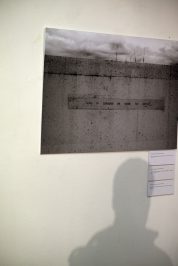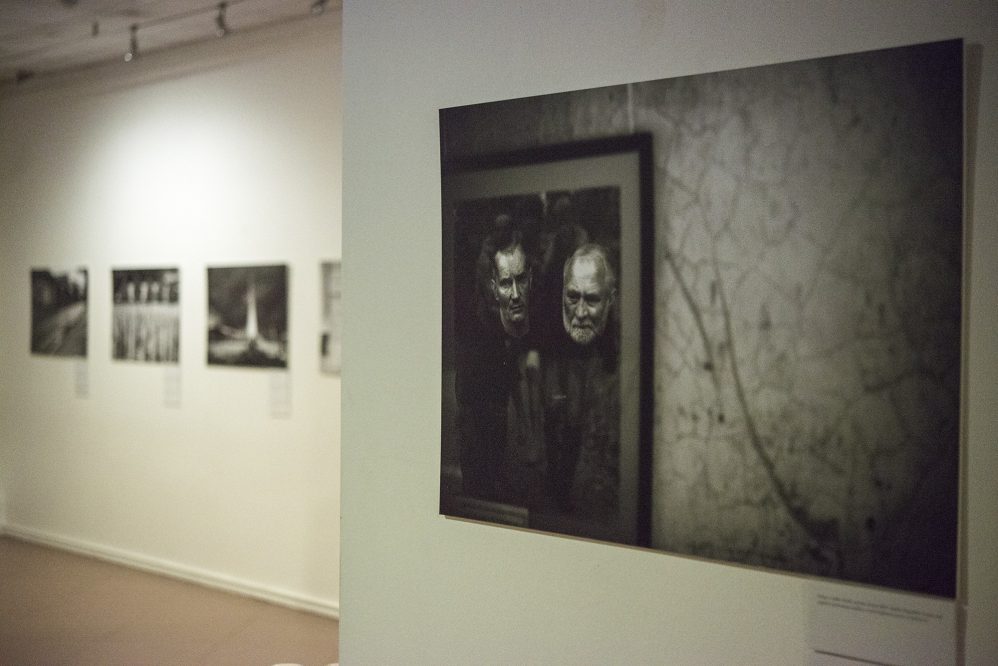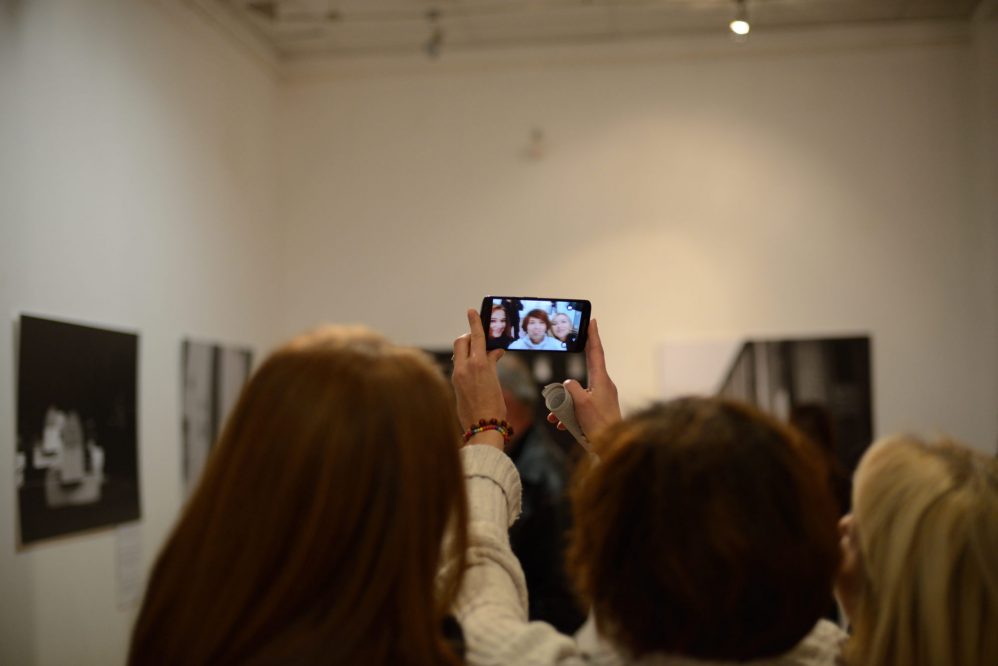Repression and forgetting are not the way to peace
The opening of the exhibition “War of Memories” organised by the Centre for Nonviolent Action Sarajevo-Belgrade in the City Gallery of Bihać completed this year’s presentation of photographs depicting marked and unmarked sites of suffering from the recent war in Bosnia and Herzegovina.
From the Sarajevo Vijećnica, the Croatian Lodge Herceg Stjepan Kosača in Mostar and the Music Pavilion Staklenac in Banja Luka, to the final exhibition in Bihać, the photographs were accompanied by a publication of the same title, and all are the result of extensive research under the project “War Monuments in Bosnia and Herzegovina since 1991”.
Without seeking to relativise culpability, and in the spirit of peacebuilding in our post-conflict region, this exhibition offered a cathartic experience and communication with varied audiences, including the war veterans CNA has been working with for years.
One of the conclusions issuing from a series of discussions during the exhibitions, in light of the current wars raging in other parts of the world, implies the need for better communication about a war-ravaged past. Exhibitions such as the “War of Memories” can be a good catalyst for dialogue about the past, because suppression and forgetting are not the way to peace.
The exhibition in Bihać was opened by Katarina Milićević, a representative of the Centre for Nonviolent Action, and on behalf of the host city, the visitors were addressed by Ilda Alibegović who pointed out the importance of exhibitions such as this one and the messages they send, as well as the efforts of organisations such as CNA that far surpass their duties. She also expressed the hope that similar experiences would never be repeated.
“We all know that there are three truths that live alongside each other, and three victims, but the intention of the exhibition is for us to find a common truth. Truth is reconciliation,” said Alibegović.
Davorka Turk, a member of the CNA team, spoke about the past twenty years of activities of the regional peace organisation, the Centre for Nonviolent Action Sarajevo-Belgrade, foregrounding its intention to constructively contribute to dealing with the past through peace education, publishing, video production and daily work with war veterans.
Sites of suffering are all around us
The large format photographs presented at the exhibition, 51 of them in total, as well as additional photos, can be viewed on the website kulturasjecanja.org and are the work of Nenad Vukosavljević and Nedžad Horozović, peace activists and members of the CNA team.
“The idea for the exhibition started with joint visits by war veterans to sites of suffering. Having visited sites of suffering, we decided to document them and allow the public to see them in order to show what is being silenced in our societies and what is being kept out of sight.
During one of our joint visits to sites of suffering, a war veteran who was a guest during that visit in that city expressed his disapproval of how the monument looked. The host responded, “Well, you know, when we were making it, we didn’t think you would come to visit.”
“For our research, we visited 85 sites of suffering. While we were photographing one such site, a man cam by and asked us what we were doing. We explained, and he told us he was a former prisoner from the camp that used to be located there. Sites of suffering are all around us.
It is common for monuments to clearly demarcate the boundaries between ethnic groups, between us and them, between us as victims and them as perpetrators, and there is no room for pain or empathy that traverse those boundaries. This can serve as a warning, but it can also give rise to righteous indignation. The beginning of constructive dialogue can be the answer to the question that each of us should seek, namely, what is a fair attitude towards the past,” said Nedžad Horozović at the opening of the exhibition in Bihać.
Does remembering contribute to peacebuilding?
Nenad Vukosavljević expressed a similar opinion when he mentioned how all sides maintain that “we must not forget”.
“I wonder what it is that must not be forgotten? Usually they say we must not forget that the enemy is close by. This is what we wanted to discuss; what is it that we remember and does it contribute to peacebuilding? We wanted to dispel insecurity and fear, because these thwart freedom.
We often hear that we are dealing with the consequences, not the causes. The ways to get there may be up for debate, but our aim is to allow people to view events from the past from different perspectives.
There was this colonel at one of our events. He spoke in praise of Mladić and would not be dissuaded by our criticism. I thought about it and suggested we should exclude him from our activities. My colleagues said he should stay. It was a big lesson for me.
Some five or six years later, when we were organising the first joint visit of war veterans from all three sides to the Memorial in Potočari, at our preparatory meeting, he said, “I’ve already been there. I was passing by and decided to visit. I wanted to see it for myself. It left an impression on me.”
During the joint veterans’ visit, he stepped in front of the cameras and said, “I am ashamed on behalf of the RS Army for what was done here.” This speaks to the possibilities and the fact that nothing is unchangeable. This is the kind of release that we all need. I hope this exhibition will be a small contribution in that direction,” said Vukosavljević.
The exhibition certainly contributed to a collective sense of release and sent a message about the necessity of dialogue and the need to promote a culture of nonviolence, which has been the basic mission of the Centre for Nonviolent Action for the past twenty years.
Dealing with the past is painful. It requires engagement and openness. Under conditions of economic poverty where citizens are easy prey for political manipulation, we are even more obligated to speak about our past in order to understand our present and in order to build a future together. In peace, without violence. By not being permanently focused on the enemy and by respecting all victims. So that it never happens again.
Following its successful “tour” through our recent past in Bosnia and Herzegovina, at the start of next year, the “War of Memories” exhibition will be presented to a Belgrade audience.
A summary of the monograph is available at http://nenasilje.org/publikacije/pdf/Rat_sjecanja.pdf


